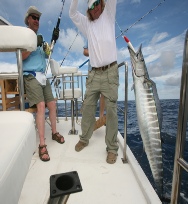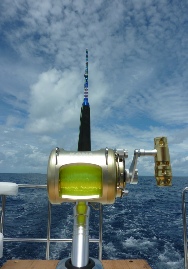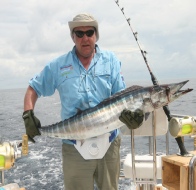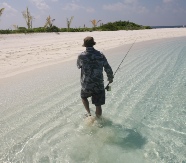© 2014 Gary Smith Fishing Ltd All Rights Reserved










Proudly Associated With


Hopefully you have started fishing from the shore and have had a little experience, not to mention success, casting your worms out onto a clean sandy seabed. This week we will cover the more difficult areas to fish from the shore, amongst the many rocks and weed patches littered around the area. This terrain can be very productive although at times frustrating for the angler as getting snagged, together with tackle losses, can be annoying but you should be able to catch many varied and interesting fish species. This is altogether different from fishing a clean seabed, both in equipment and technique. Rocky and weed covered areas can be found either from the beach or from rocks. A rocky outcrop will usually provide you with deeper waters to fish.
The first thing you will probably be thinking is: How will you know where the rocks and weed patches are located beneath the sea? The easiest way to determine this is choose an area of coastline that you are familiar with and visit the venue on a calm day. Try and find a viewpoint above the shore and then you will clearly see the dark patches in contrast to the lighter areas of sand beneath the water.
I have even photographed areas I fish regularly, when the sea is calm to build up a virtual map of the venue regarding location of rock and weed. This is very useful when the locations are competition venues so when my peg number is allocated I know within a few metres what terrain I am fishing over. This saves a lot of time using the wrong line, terminal rigs and bait. I know smaller weed patches can move when the sea is very rough, after a storm maybe, but generally this is rare.
This week I will explain how to construct a very simple two-hook paternoster to attach to a minimum thickness 0.40 and 15 Kg rated main spool line for fishing the aforementioned terrain using the following items.
1 135 Centimetre Length of 0.50 Line.
1 Covered Top Clip.
2 Triple Swivel Line Connectors.
1 Covered Weight Clip.
1 60 To 120 Gram Weight
2 Snoods with size 8 Hooks
First of all cut three 45-centimetre lengths of 0.50 thickness line. Take one covered top clip and using a tucked half blood knot attach the first piece of line to the clip. Take the free end and connect to the top of a triple swivel line connector. Attach the second piece of line to the bottom of the triple connector and the other end to the second triple swivel. Tie the last section of line to the bottom of the second triple swivel and the other end to the covered weight clip, not forgetting to slide the sheath up the line before tying the knot. Cut the hook lengths to approximately 25 centimetres and tie them to the two free eyes on the three way swivels attached to the line. Make sure all knots are trimmed neatly as any loose ends will collect weed. Attach a weight suitable for the distance you are casting and then you will have a very strong terminal rig for fishing rough ground. The hook lengths do not want to be any longer than stated unless it is very calm waters and only the top hook should be lengthened, as the bottom hook would foul on retrieval if it were longer. It is advisable to take several rigs with you when fishing this terrain, as you will lose hooks, weights and line. This is inevitable. Also something to remember when fishing off rocks, try and take someone with you, slippery rocks are dangerous and the Mediterranean is just as powerful and deadly as any other sea or ocean in the world when you have fallen in.
Registered Copyright © Gary Smith & Luigi Mateos
Back
| Address |
| Contact Us |
